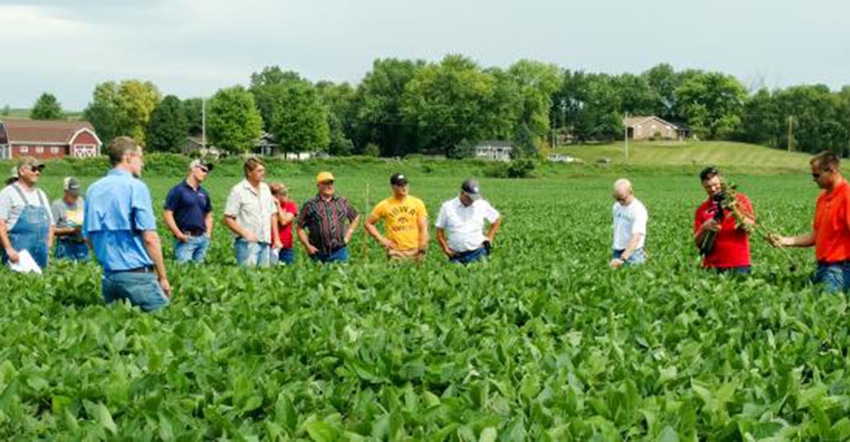September 26, 2019

The Weed Science Society of America and Entomological Society of America organized a recent tour of a state-sponsored resistance management demonstration project in Harrison County, Iowa.
More than 70 stakeholders from across the nation participated – from researchers and policymakers to ag-industry representatives.
“Resistance is an issue that impacts the economy of countless local farm communities,” says Amy Asmus, a WSSA member and vice president of Asmus Farm Supply. “Though there is no single solution to the resistance challenge, there are important learnings from the Harrison County experience that can be replicated elsewhere.”
The Harrison County Project is part of the Iowa Pest Resistance Management Program, an initiative to slow pest resistance by building community relationships, spreading awareness and finding workable solutions to local pest issues. Participants include a wide range of stakeholder groups involved in Iowa agriculture.
Here are six examples of what policy tour participants say Harrison County has done well:
Adapt to local concerns. The Harrison County program was launched to combat the growing threat of herbicide-resistant Palmer amaranth in Iowa corn crops. An early survey, though, showed local farmers had more immediate concerns about the control of giant ragweed, marestail and waterhemp. The pilot program was expanded to include what mattered most to those on the front lines of the resistance issue.
Bring the issue to life. Sometimes seeing is the key to believing. The Harrison County team has conducted two sets of herbicide trials to demonstrate the reality of resistance and the threat it represents. It has helped them build support for systemic changes.
Promote proactivity. Team members encourage growers to get out ahead of resistance issues instead of waiting for problems to develop. They emphasize the importance of a well-planned rotation of tools and control practices that can prevent or delay the evolution of resistance.
Talk it up. The group doesn’t hide away in meeting rooms. Instead they work hard to generate awareness. Team members have spoken at events, hosted field days, written articles, created and distributed handouts, produced a video and launched a web presence.
Make course corrections. The group approaches goal setting one growing season at a time, with annual surveys and grower discussions to help them stay current. One example: After hearing concerns this year about crop diseases that have become resistant to commonly used fungicides, they’ve added a new field trial to focus on the issue.
Pitch a big tent. No single constituency can solve the complex issue of resistance. Harrison County has assembled a diverse team of farmers, landowners, agronomists, crop advisers, researchers, bankers, agribusiness professionals, and seed and herbicide company professionals. Each has a stake in the success of the local farming community and a role to play in resistance management.
“Resistance is a complex problem that can’t be solved overnight,” says Clint Pilcher, an ESA member and global biology leader with Corteva Agriscience. “It is clear, though, that rallying a group around shared values can make a difference – leading to increased dialogue and to new, creative approaches.”
Experts say shared values have been a factor in other successful community-based programs, including initiatives to fight the pink bollworm, a pest that once threatened cotton crops in Arizona and other southwestern states. After many years of effort, the bollworm has now been eradicated.
“It takes time and dedicated local leaders to promote cooperation and build stakeholder commitment,” says Paul Lasley, Ph.D., a professor at Iowa State University. “But the results can be worth the effort. We hope public policy makers and other communities across the nation will be inspired to launch their own initiatives to address the complex problem of resistance.”
Source: Weed Science Society of America, which is solely responsible for the information provided and is wholly owned by the source. Informa Business Media and all its subsidiaries are not responsible for any of the content contained in this information asset.
You May Also Like




